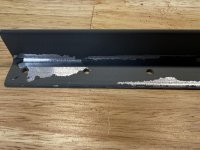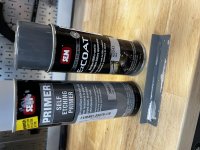Hello, first post, and I need some help! I’m having an issue getting self etching primer to stick to aluminum angle. I have done all the research on priming and decided that I would prime parts with rattle can primer for the most part. After a lot of research it seemed that most folks had good success with the SES self etching primer that Aircraft Spruce sells. After a couple of attempts I am still having issues. I have tried roughing the surface with a maroon scotch brite pad, no luck, so I then went to 80 grit paper and still couldn’t get adhesion. I think I have talked enough so please see attached photos and I would love to hear how you folks that have used this have had success. Thanks!
Attachments
Last edited:






